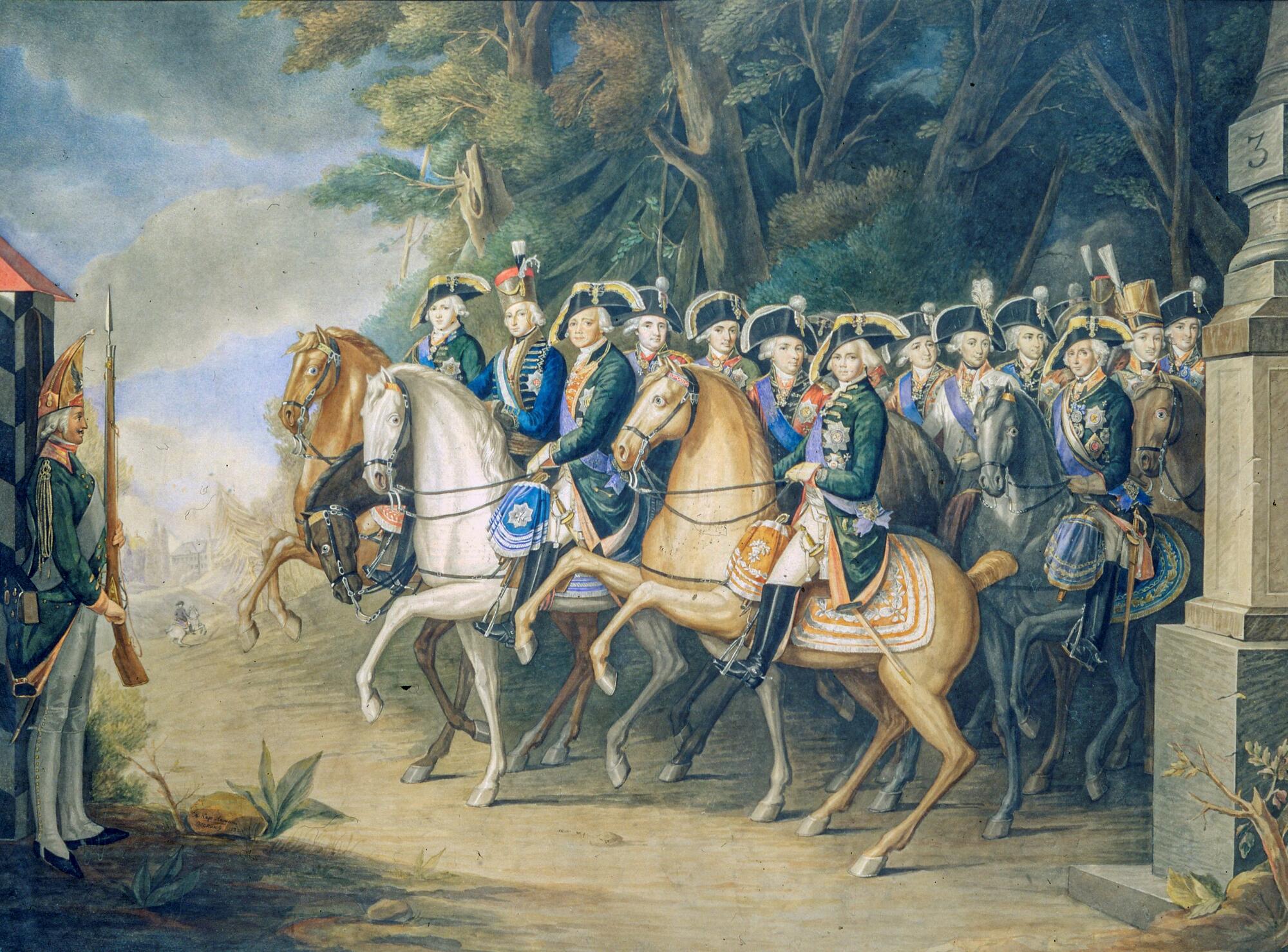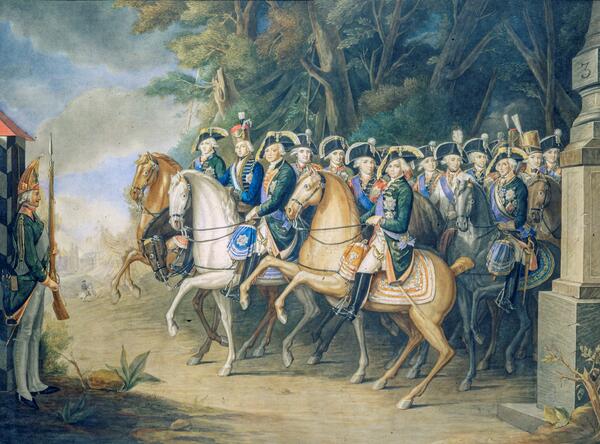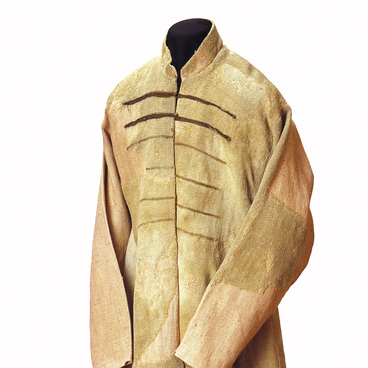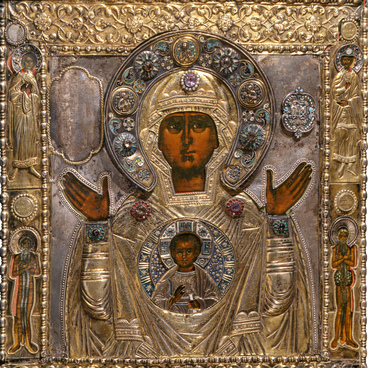The watercolor painting “Emperor Paul I with his Entourage” is a reduced replica of the painting of the same name by Austrian artist Johann Baptist von Lampi the Younger, who worked in Russia from 1795 to 1804. The artwork from the collection of the State Historical Museum was created by Konstantin Osokin, a famous painter of the first half of the 19th century and master of history painting.
Emperor Paul I is depicted surrounded by his sons, Grand Dukes Alexander and Konstantin. Members of the imperial house were officially included in the retinue only since the reign of Alexander I (Paul’s son). At the same time, they were granted the rank of adjutant general. Thus, the sons of Paul I did not formally belong to the emperor’s retinue, but accompanied him as family members and future heirs to the throne.
To the right of Paul is Austrian Archduke Joseph, Palatine of Hungary. The artist depicted him among the closest relatives of the Russian monarch. Joseph was the son-in-law of Paul I: in 1799 he married his eldest daughter Alexandra Pavlovna and then visited Russia for the first time. The marriage was supposed to strengthen the ties between the Romanov and Habsburg dynasties, as well as political relations between Russia and Austria.
The artist also included Alexander Suvorov, a notable Russian military commander, in the entourage of the emperor. His relations with Paul I were strained, but the monarch recognized Suvorov’s merits and showered him with honors: he was granted the title of “Knyaz Italiysky” (prince of Italy) and the highest military rank of generalissimo. Furthermore, according to a special decree issued by Paul, Suvorov was to be greeted with an imperial salute, even in the presence of the emperor.
Two more confidants of Paul I, Platon Zubov and Peter Pahlen, are depicted on the canvas. They were the ones who, in March 1801, organized a conspiracy and a palace coup, as a result of which the emperor was assassinated, and his son Alexander I came to power.
Emperor Paul I is depicted surrounded by his sons, Grand Dukes Alexander and Konstantin. Members of the imperial house were officially included in the retinue only since the reign of Alexander I (Paul’s son). At the same time, they were granted the rank of adjutant general. Thus, the sons of Paul I did not formally belong to the emperor’s retinue, but accompanied him as family members and future heirs to the throne.
To the right of Paul is Austrian Archduke Joseph, Palatine of Hungary. The artist depicted him among the closest relatives of the Russian monarch. Joseph was the son-in-law of Paul I: in 1799 he married his eldest daughter Alexandra Pavlovna and then visited Russia for the first time. The marriage was supposed to strengthen the ties between the Romanov and Habsburg dynasties, as well as political relations between Russia and Austria.
The artist also included Alexander Suvorov, a notable Russian military commander, in the entourage of the emperor. His relations with Paul I were strained, but the monarch recognized Suvorov’s merits and showered him with honors: he was granted the title of “Knyaz Italiysky” (prince of Italy) and the highest military rank of generalissimo. Furthermore, according to a special decree issued by Paul, Suvorov was to be greeted with an imperial salute, even in the presence of the emperor.
Another character of the painting is Prince Alexander Bezborodko, one of the famous foreign policy figures of Catherine’s era. By the end of the reign of Catherine the Great, he fell into disgrace and retired, but Pavel soon summoned him back to the capital and generously awarded him with orders, estates and a count’s title.
Two more confidants of Paul I, Platon Zubov and Peter Pahlen, are depicted on the canvas. They were the ones who, in March 1801, organized a conspiracy and a palace coup, as a result of which the emperor was assassinated, and his son Alexander I came to power.



